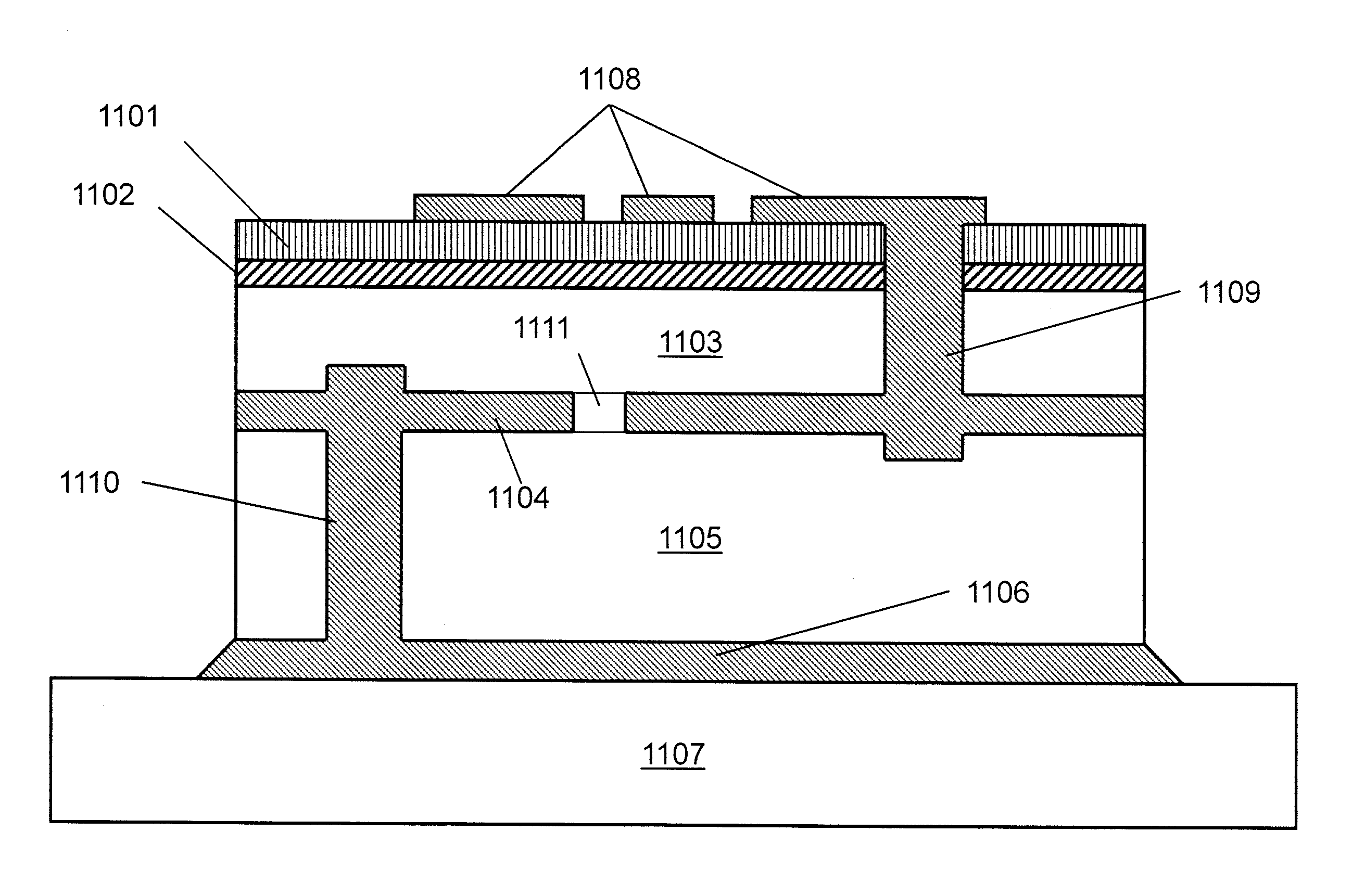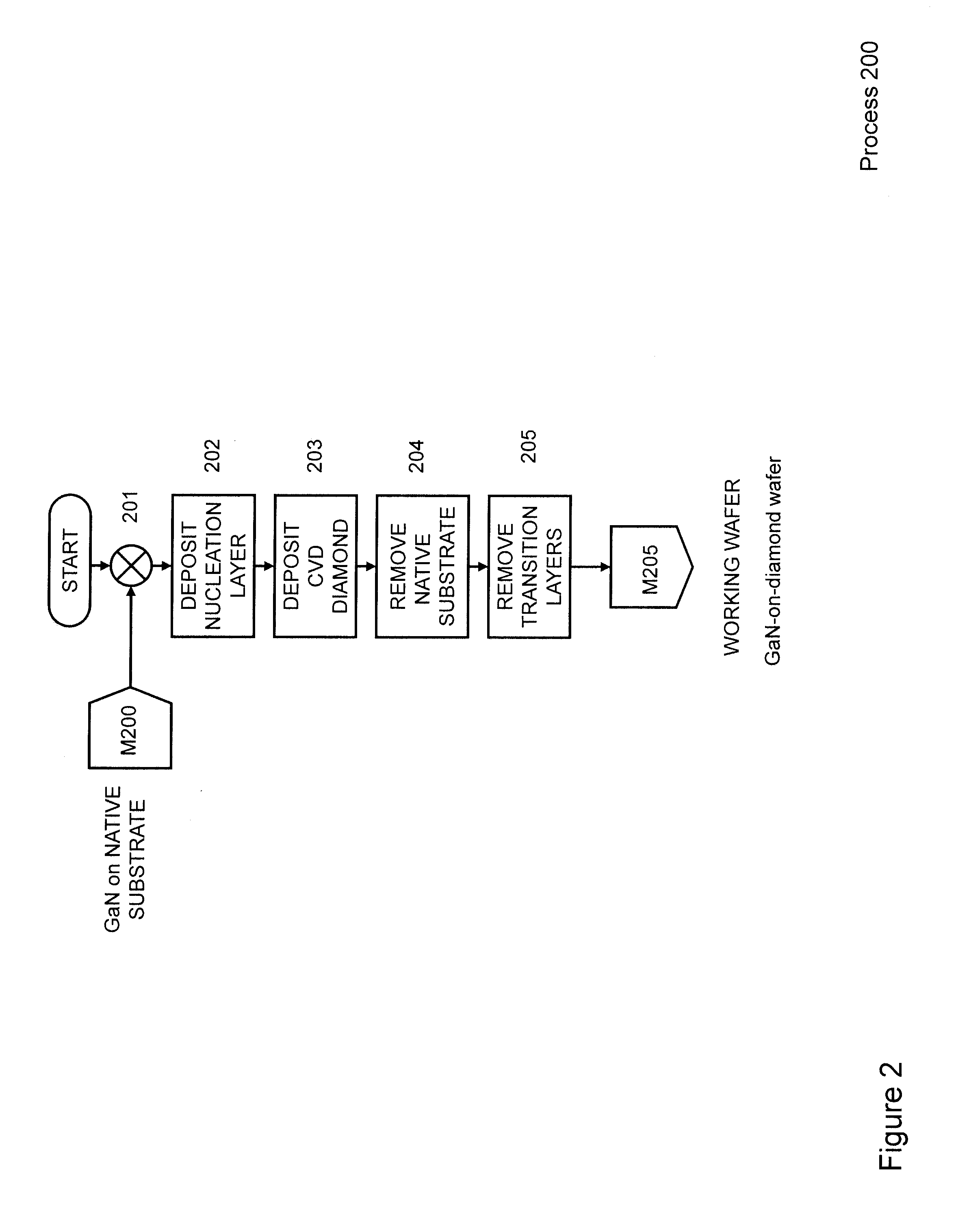Gallium-nitride-on-diamond wafers and devices, and methods of manufacture
a technology of diamond wafers and diamonds, which is applied in the direction of polycrystalline material growth, crystal growth process, chemically reactive gas, etc., can solve the problems of unacceptably high bow and reduce the thermal resistance of any electronic and optoelectronic device, so as to improve the quality of the epilayer, improve the thermal resistance, and improve the effect of gan-on-diamond wafers
- Summary
- Abstract
- Description
- Claims
- Application Information
AI Technical Summary
Benefits of technology
Problems solved by technology
Method used
Image
Examples
process embodiment
Detailed Wafer Structure and Process Embodiment Descriptions
[0107](a) 100-400-500. In one embodiment of preferred method for the manufacturing of high-quality GaN-on-diamond wafers and devices, an as-grown wafer M100 with preferred structure 700 is provided as input to the preferred method 100. The structure of the wafer resulting from process 100 may be, but is not limited to preferred wafer structure 750. The working wafer M111 resulting from process 100 is then provided as input wafer M400 to process 400. The structure of the wafer resulting from process 400 may be, but is not limited to preferred wafer structure 770. In another embodiment, the resulting composite wafer M405 is further processed into devices using process 500, resulting in chips M506 which may have, but are not limited to chip or wafer structure 780.
[0108](b) 100-600. In one embodiment of preferred method for the manufacturing of high-quality GaN-on-diamond wafers and devices, an as-grown wafer M100 with preferre...
PUM
| Property | Measurement | Unit |
|---|---|---|
| thickness | aaaaa | aaaaa |
| thickness | aaaaa | aaaaa |
| thickness | aaaaa | aaaaa |
Abstract
Description
Claims
Application Information
 Login to View More
Login to View More - R&D
- Intellectual Property
- Life Sciences
- Materials
- Tech Scout
- Unparalleled Data Quality
- Higher Quality Content
- 60% Fewer Hallucinations
Browse by: Latest US Patents, China's latest patents, Technical Efficacy Thesaurus, Application Domain, Technology Topic, Popular Technical Reports.
© 2025 PatSnap. All rights reserved.Legal|Privacy policy|Modern Slavery Act Transparency Statement|Sitemap|About US| Contact US: help@patsnap.com



